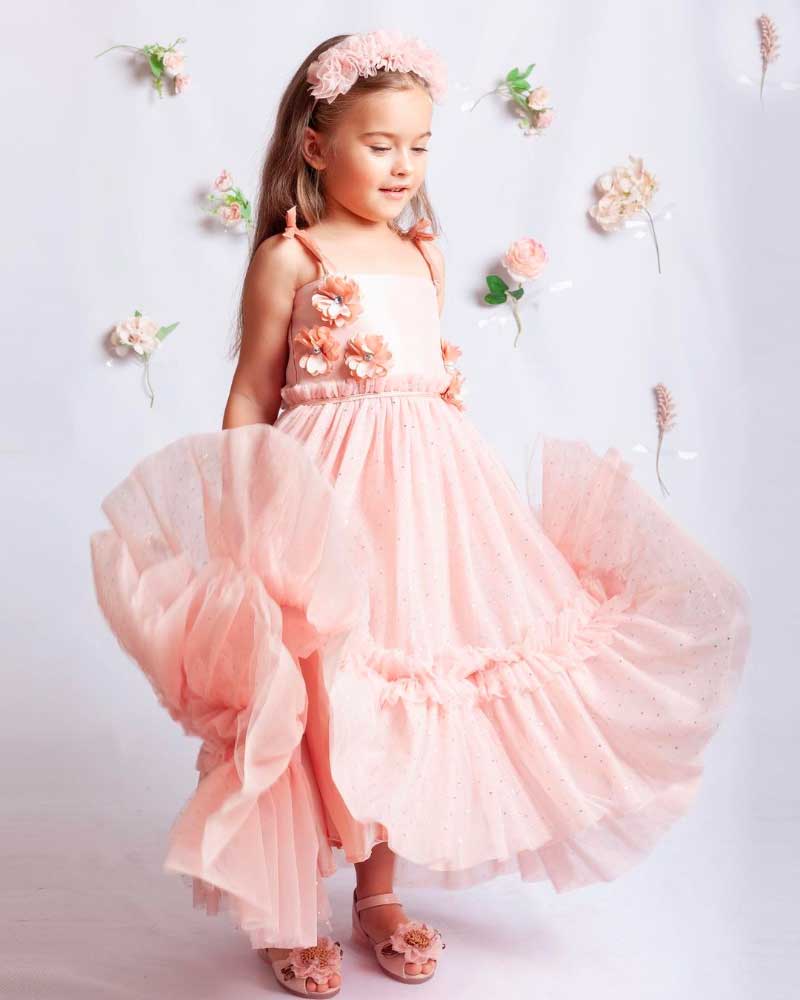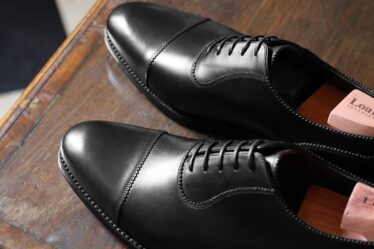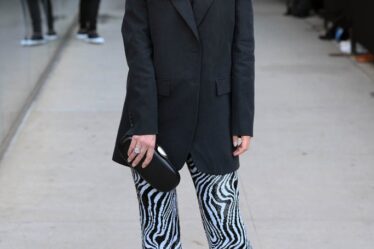
Explaining tutu dresses and their popularity
Tutu dresses originated in the early 1800s as part of ballerina costumes. They were typically short, frilly skirts made of tulle or netting that allowed for ease of movement during dance performances. Over time, tutus evolved to become more voluminous and intricate, with layers upon layers of tulle and embellishments such as sequins and crystals.
In recent years, tutu dresses have gained popularity beyond the dance world and are now a fashionable choice for young girls’ special occasions such as birthdays and weddings. Tutu dresses come in a variety of styles including classic ballet-inspired designs, princess-like frocks with flowing tulle skirts, and even modern interpretations such as colorful rainbow tutus.
The versatility of these dresses allows them to be dressed up or down depending on the occasion. Additionally, their playful and whimsical aesthetic has made them a go-to choice for parents looking to add fun to their children’s wardrobes.
Innovations in design & materials used for tutu dresses
Tutu dresses have been a staple of ballet performances since the early 19th century. Originally, they were made using layers of tulle fabric that were tied around a dancer’s waist and flared out to create a voluminous skirt. Over time, the design of tutus evolved to include various styles such as the romantic and classical tutu.
In recent years, there have been numerous innovations in design and materials used for kid’s tutu dresses. For example, designers are now incorporating more intricate patterns and colors into their plans instead of just sticking with traditional white or pink. Additionally, some designers are experimenting with new fabrics like organza or chiffon to create more dynamic movement in the skirt.
Another trend is combining traditional techniques with modern technology. Laser-cutting machines can be used to cut intricate patterns into fabrics like tulle or silk while computer-aided design programs help designers experiment with different shapes and sizes before finalizing their designs. As technology continues to evolve, it will be exciting to see what innovations emerge in the world of tutu dress design.
Contemporary Tutus Modern Styles
Tutus were originally designed as a ballet costume, made of layers of tulle and netting to give the illusion of floating on stage. The traditional tutu was a short skirt that ended at the mid-thigh, allowing for freedom of movement during dance performances. Over time, tutus have evolved from their original form to cater to modern styles.
Contemporary tutus are known for their versatility and can be seen in various lengths and shapes, including knee-length, calf-length, and full-length. They also include different styles such as romantic, classical, or pancake tutus. Modern designers have incorporated new materials like lycra or spandex into the design process to create more comfortable options.
As fashion has evolved over the years, so have tutus. Today’s designers use embellishments such as sequins and beads to add dimensionality while some opt for more minimalistic looks with simple designs that focus on clean lines and elegant silhouettes. With such a wide variety of contemporary tutu designs available today, there is something for everyone regardless of personal taste or style preference.
Pop Culture Influence Explaining what a tutu dress is
Tutu dresses have been a staple in pop culture for many years, particularly in the world of ballet. The tutu dress originated in the 1800s as a short, stiff skirt made of tulle worn by ballerinas to show off their legwork. Over time, the tutu evolved into different styles such as the romantic tutu and classical tutu.
Today, tutu dresses are not just limited to ballet performances and have become popular fashion items for both children and adults. Tutu can be seen on runways, in music videos, and even in Halloween costumes. They come in various styles ranging from traditional tulle skirts to quirky designs with embellishments like sequins or feathers.
The influence of pop culture has played a significant role in making the kid’s tutu dress a mainstream fashion item rather than just a costume for performances. Celebrities like Taylor Swift and Lady Gaga have been spotted wearing them on stage or in music videos.
Which has helped make them more accessible to everyday consumers. Overall, it is clear that the impact of pop culture has transformed the once-exclusive world of ballet into something that can be enjoyed by anyone who loves fashion and expression through clothing choices.
Modern styles and variations of tutu dresses today
Tutu dresses have been around for centuries and were originally designed as ballet costumes for ballerinas. These dresses were typically made of layers of tulle or netting, giving them their classic puffy appearance. Over time, the tutu dress has evolved to include a wide range of styles and variations.
Today, modern tutu dresses come in various lengths, from short and sweet to long and flowing. Some designs feature asymmetrical hemlines or intricate embellishments such as sequins or beads. Tutu can also be paired with different types of tops, including crop tops, lace bodices, or simple tank tops.
In addition to traditional white tutus worn by ballerinas, there are now an array of colors available for modern tutus such as pastel pinks and blues. Another popular variation is the ombre tutu which features color blending from light to dark hues. With all these options available today it’s easy to find a perfect tutu dress that fits your style!
Conclusion: Timeless Beauty of Tutu Dresses
Tutu dresses have been around for centuries, evolving from longer, more modest styles to shorter, fluffier versions we see today. The first tutus were seen in ballet performances during the 1800s. They were long and made of heavy fabrics that restricted movement. It wasn’t until the early 1900s that tutus began to take on a lighter, more voluminous appearance.
As dance styles changed and evolved, so did the tutu dress. Today’s tutus are typically shorter and made with layers upon layers of tulle for maximum volume and movement. They are often adorned with sequins or other embellishments to add a touch of glamour.



